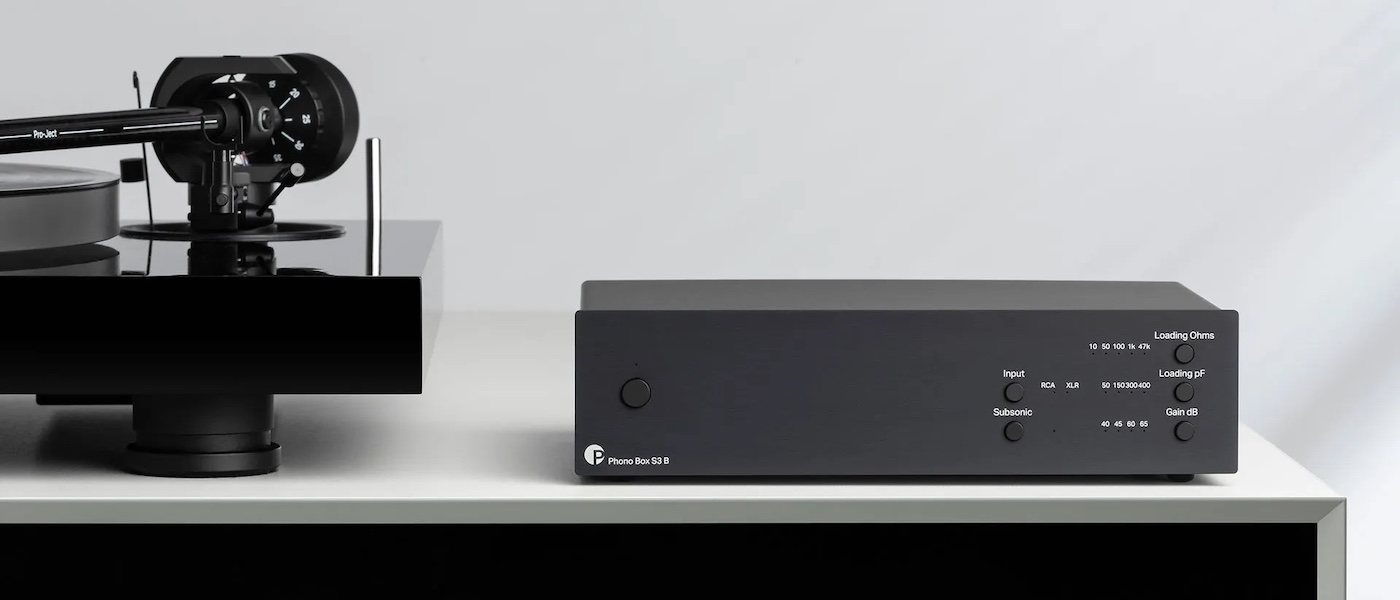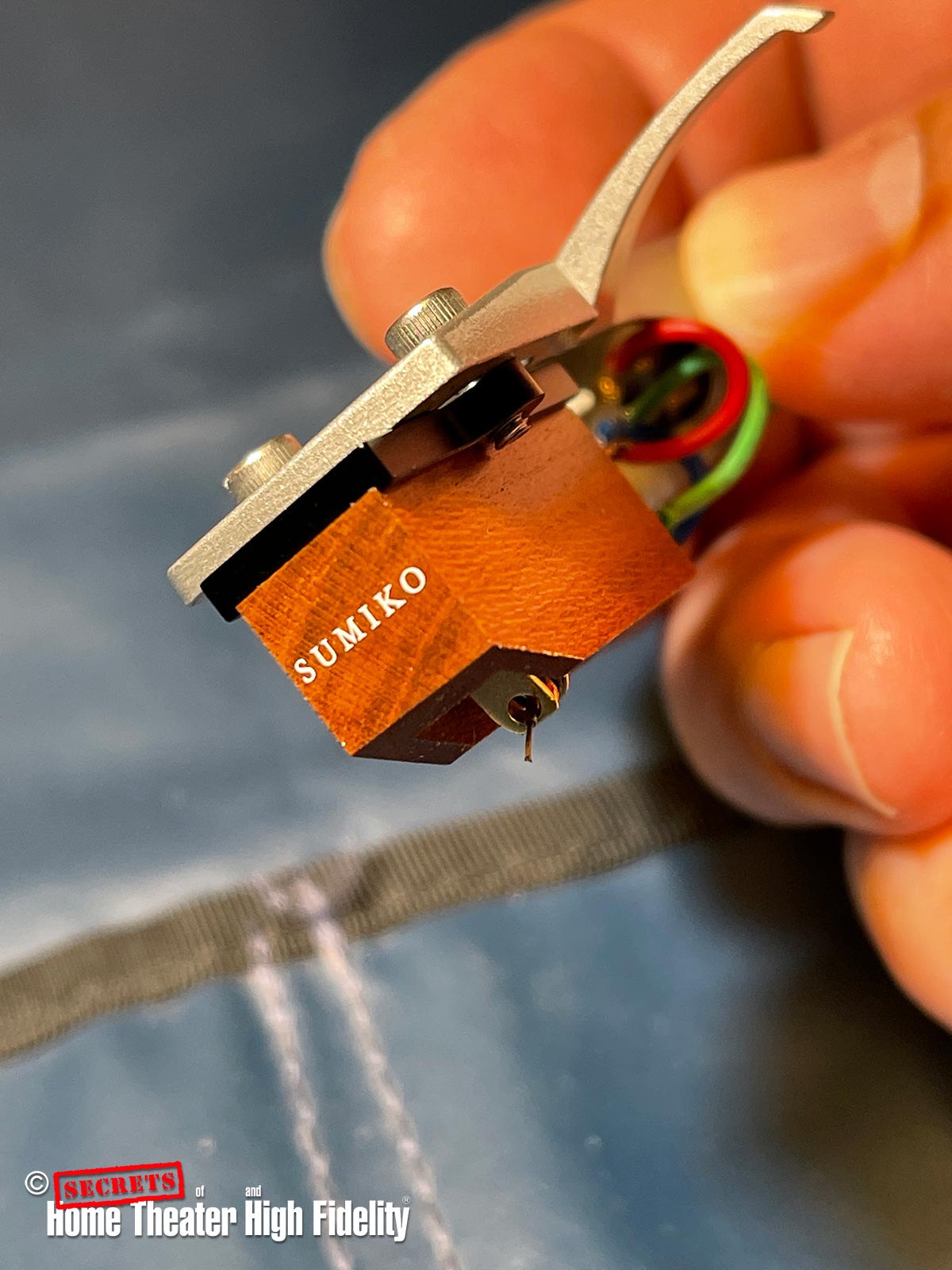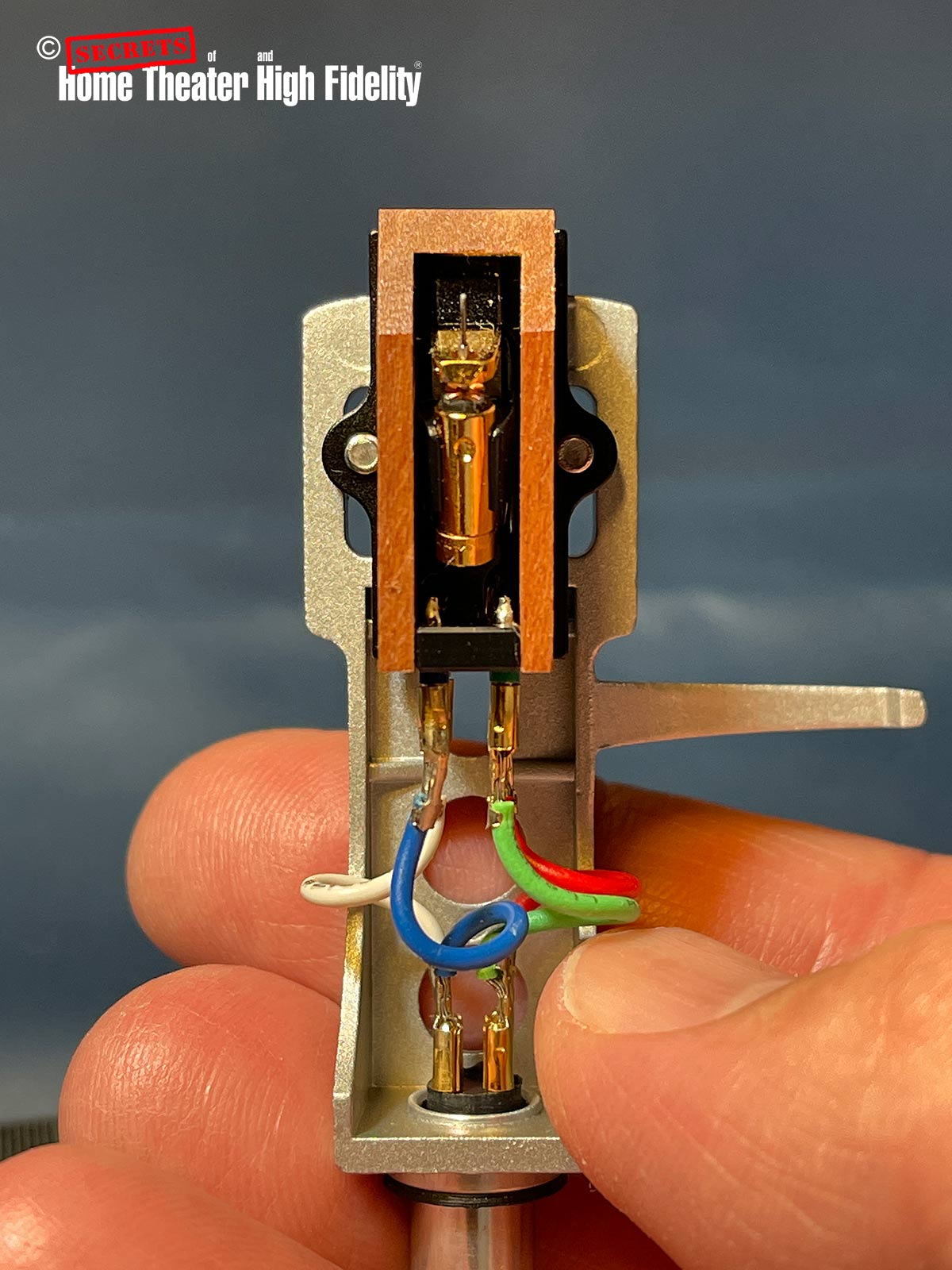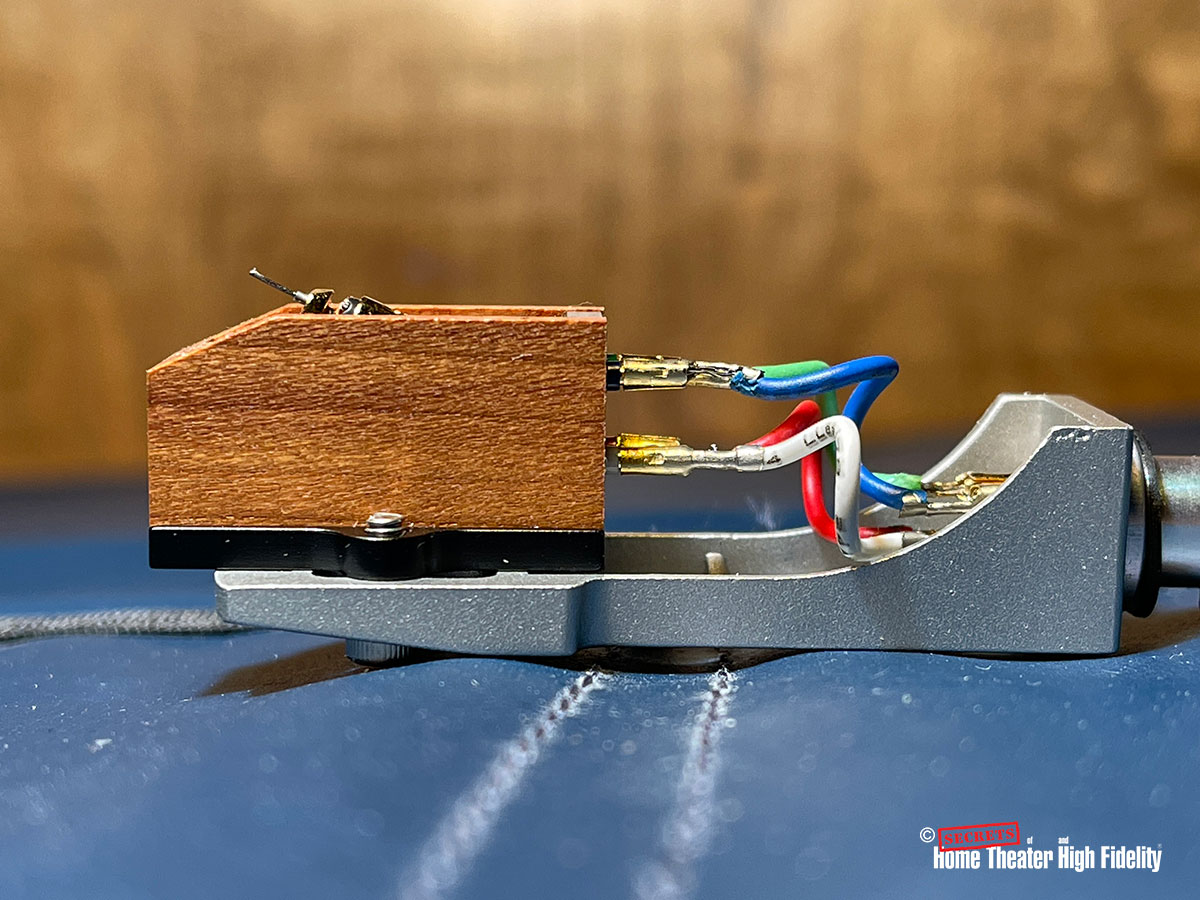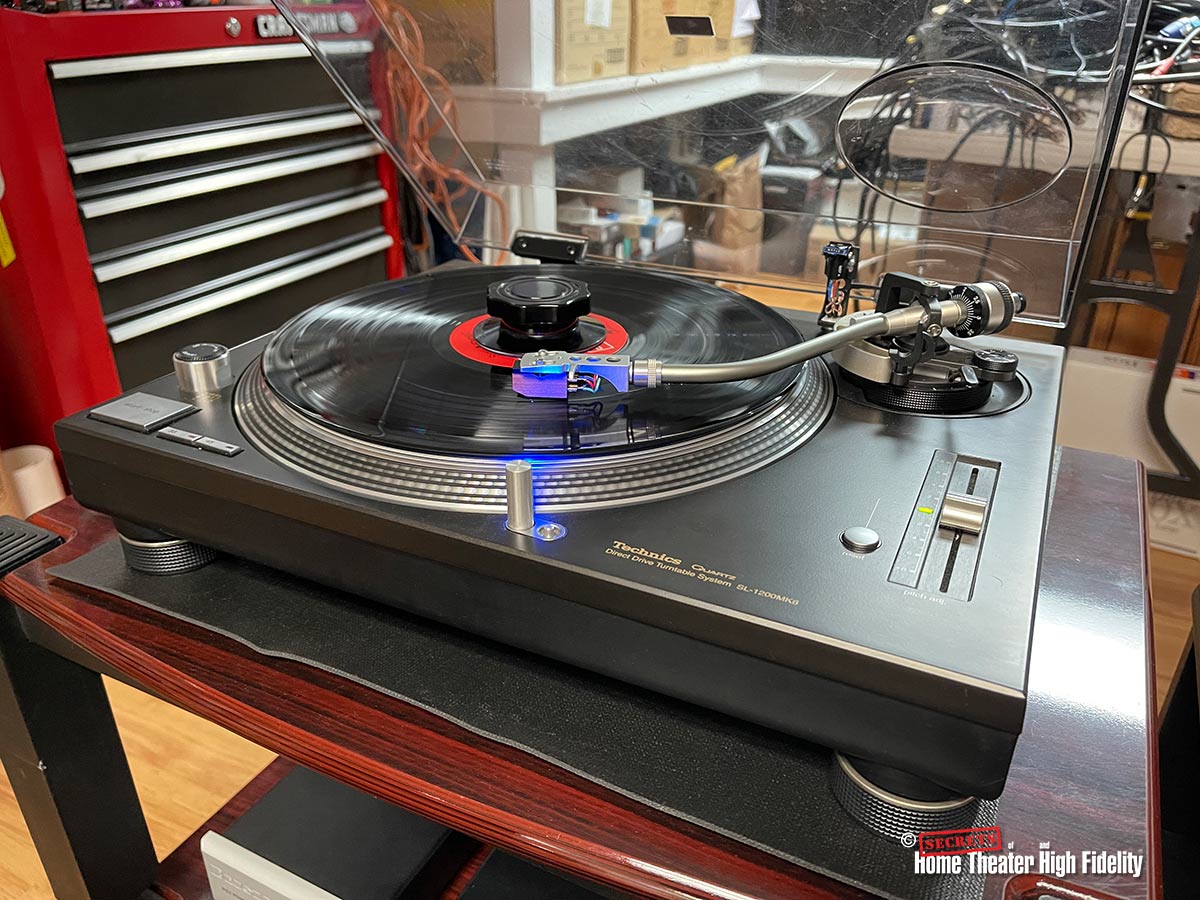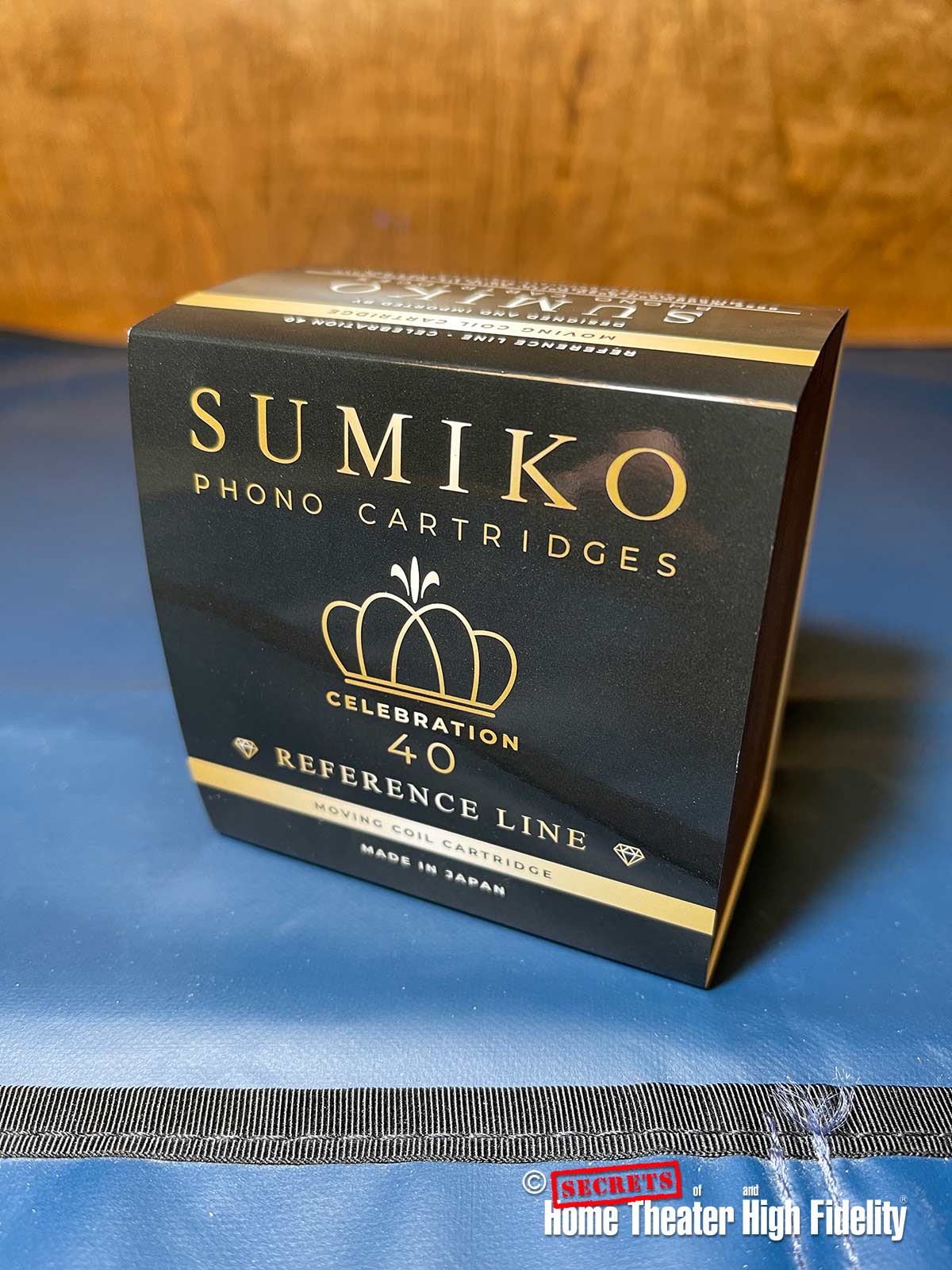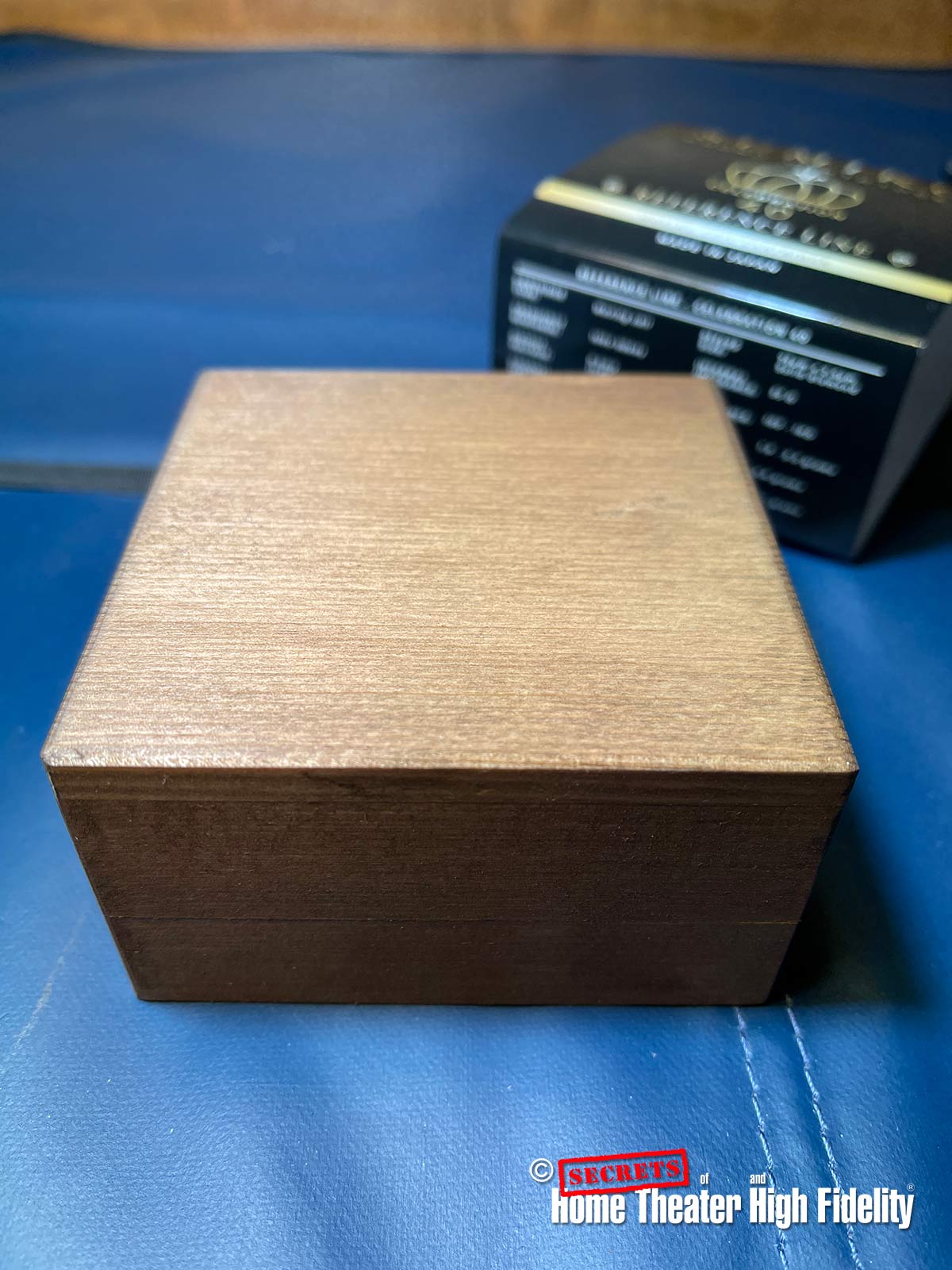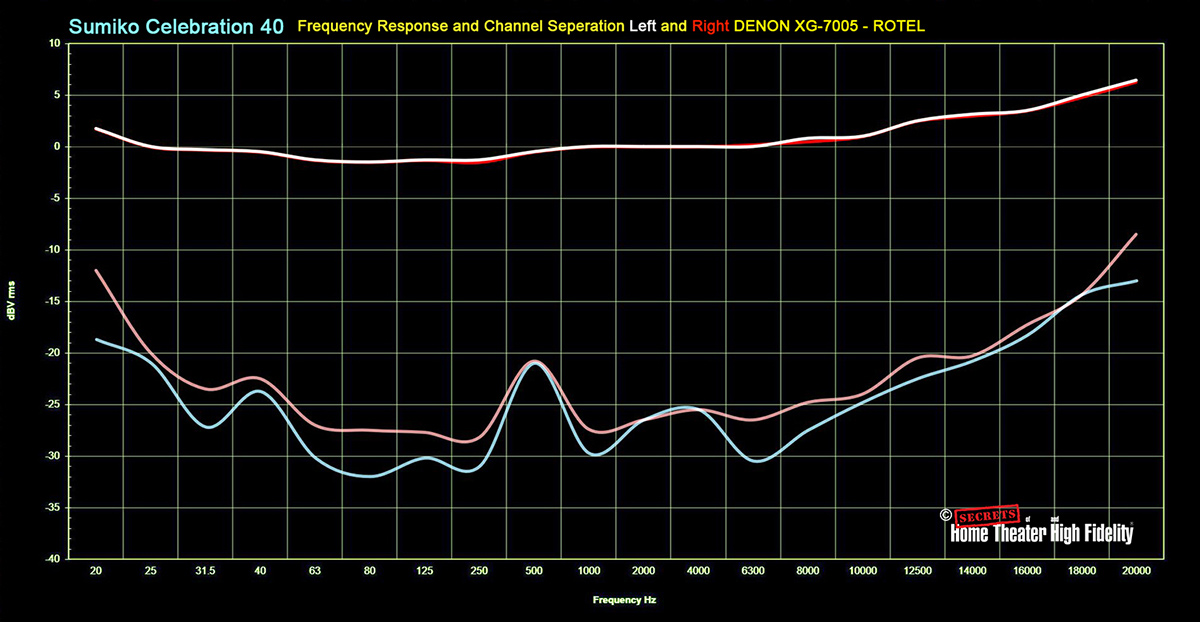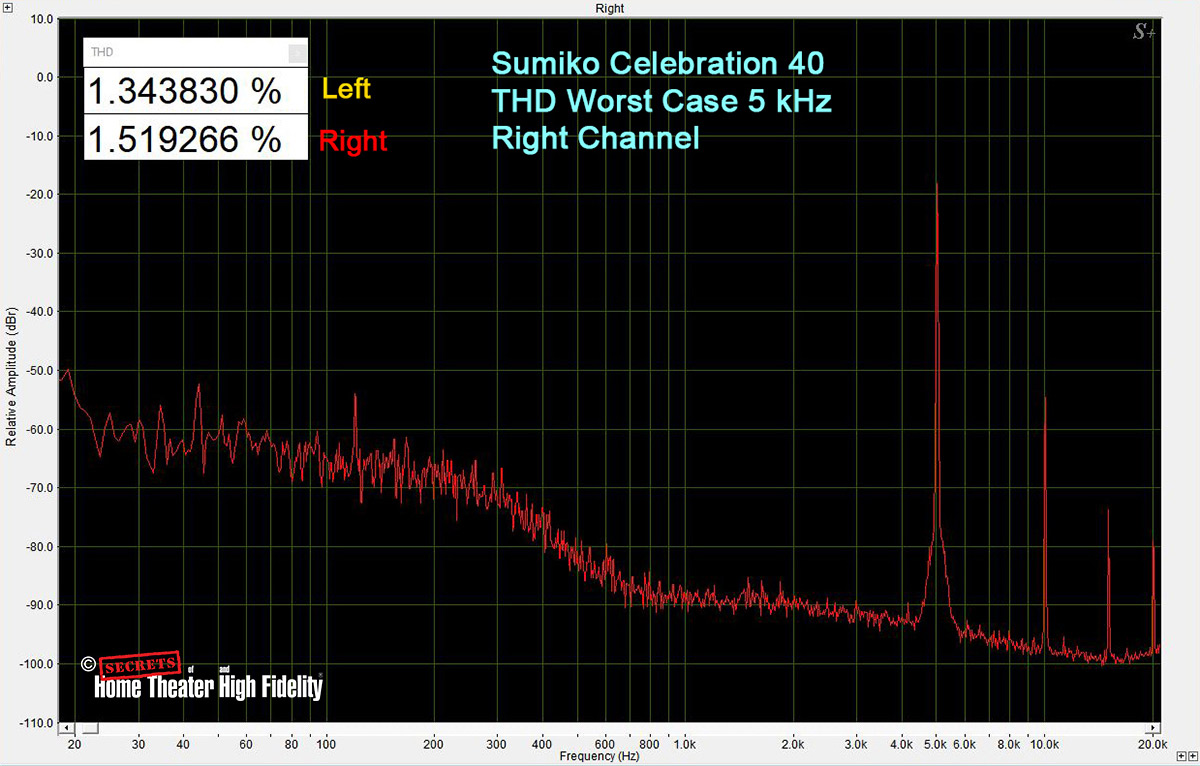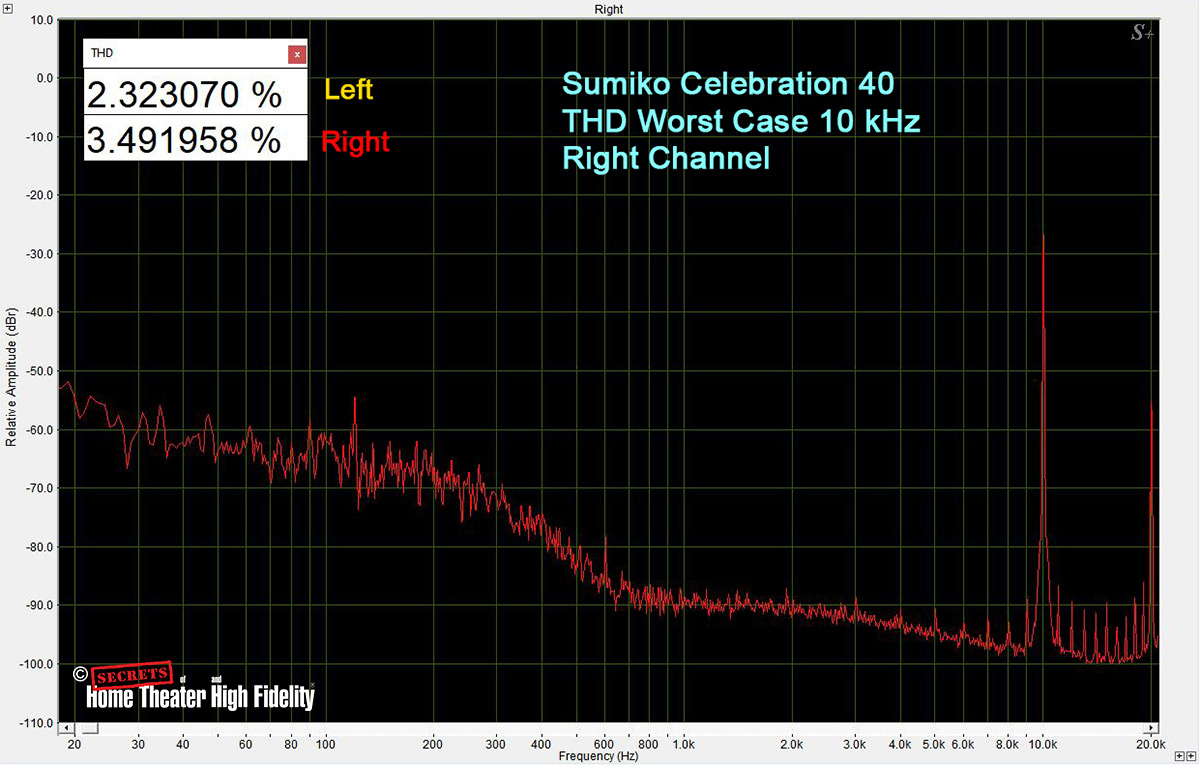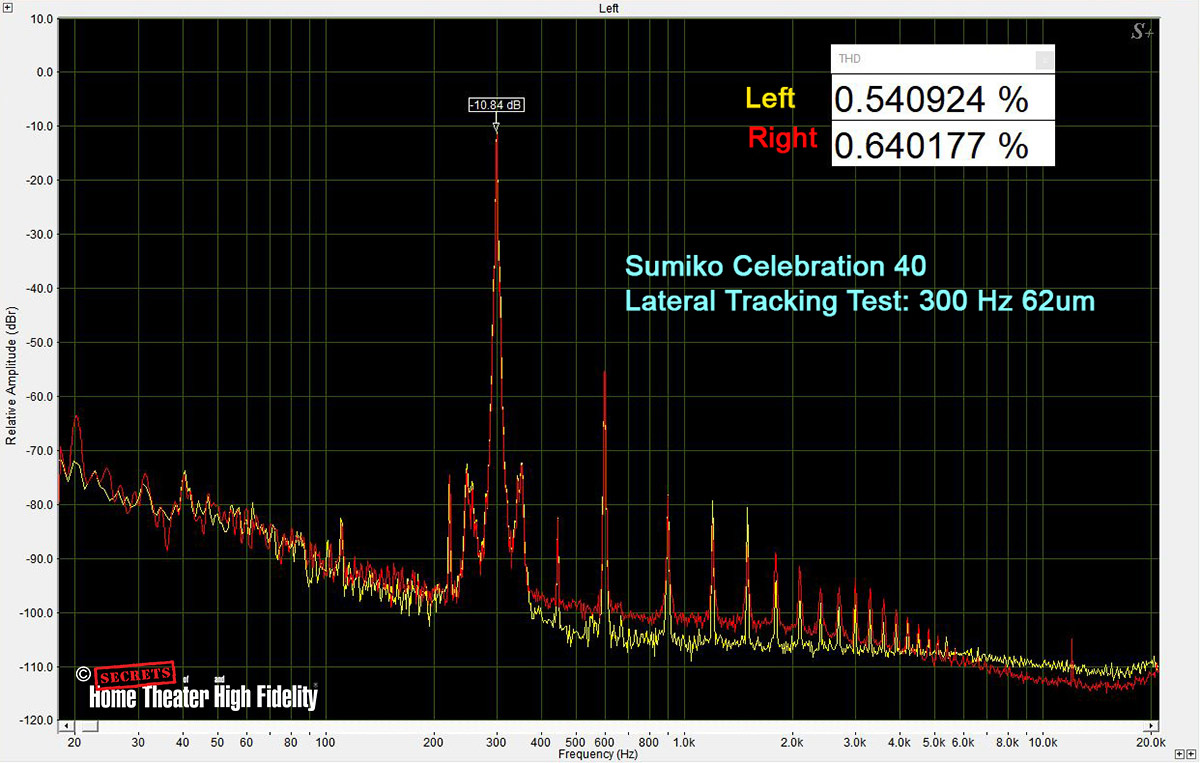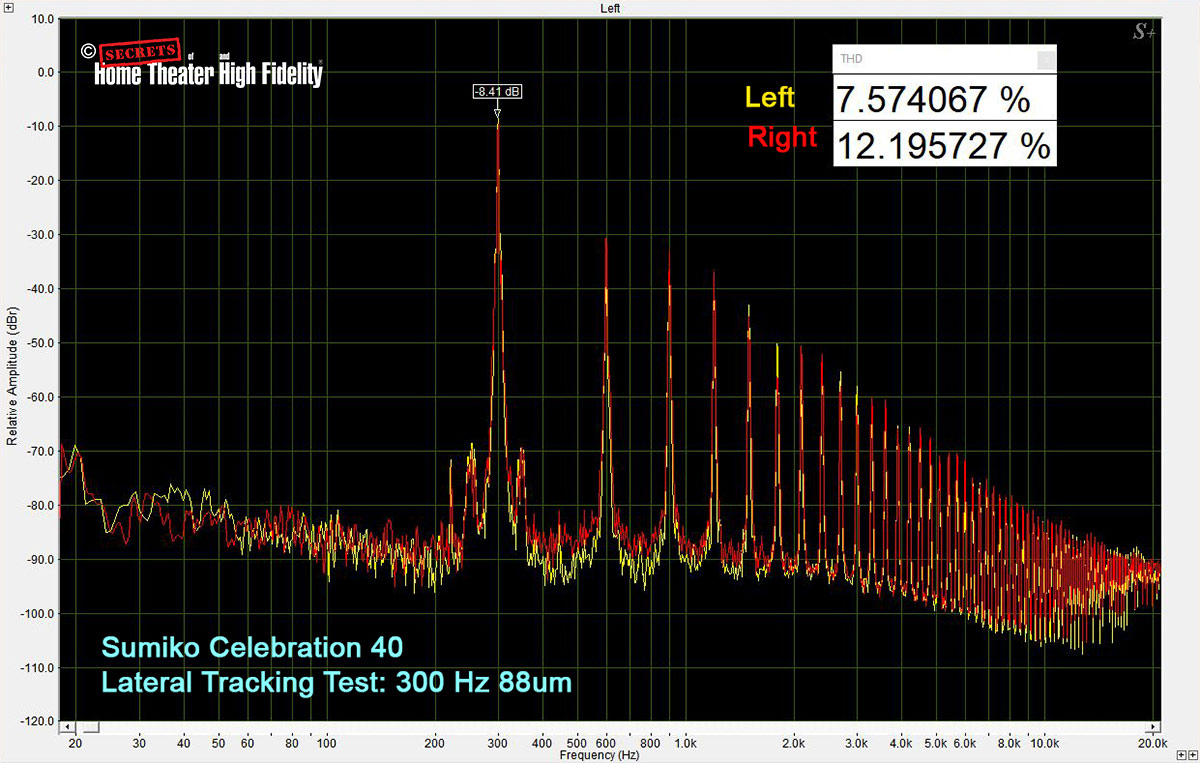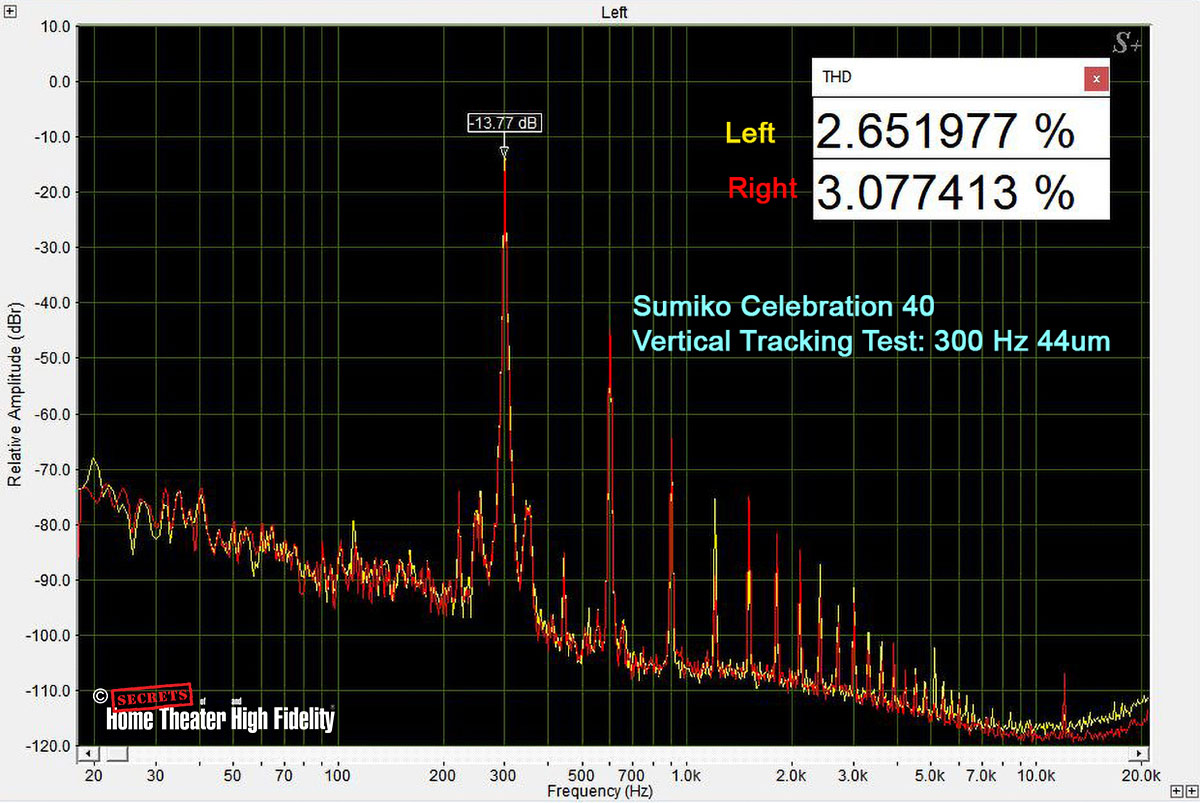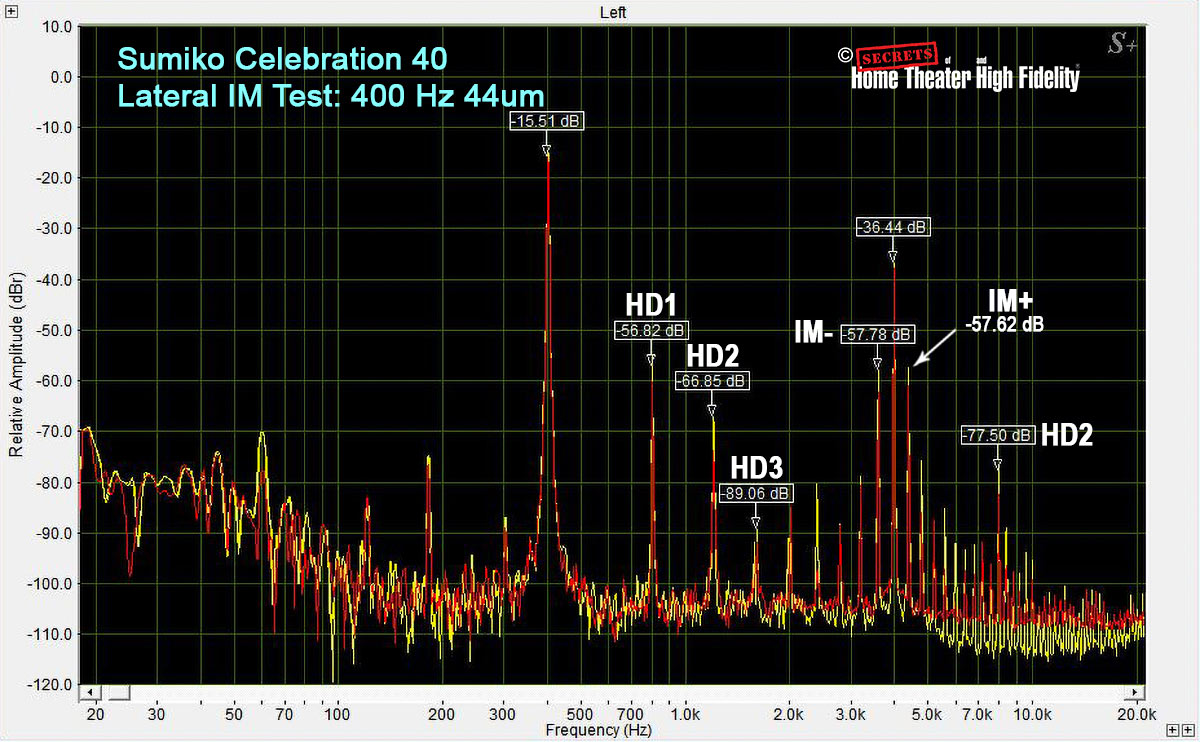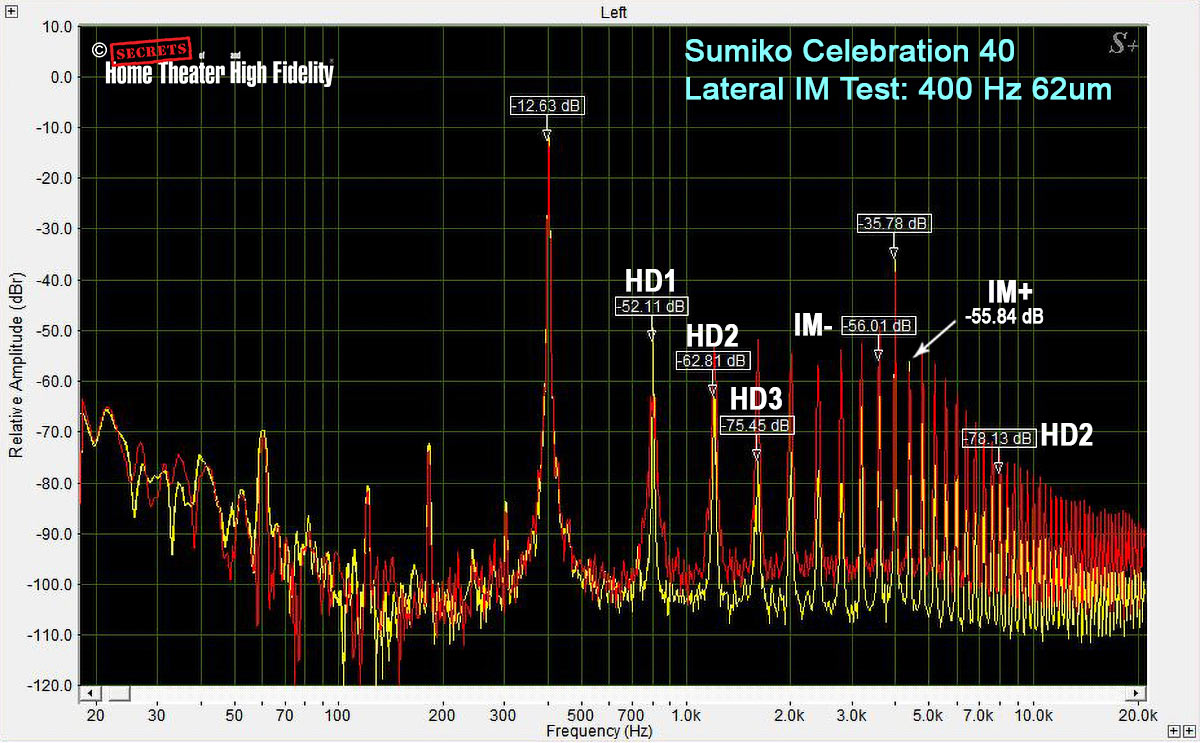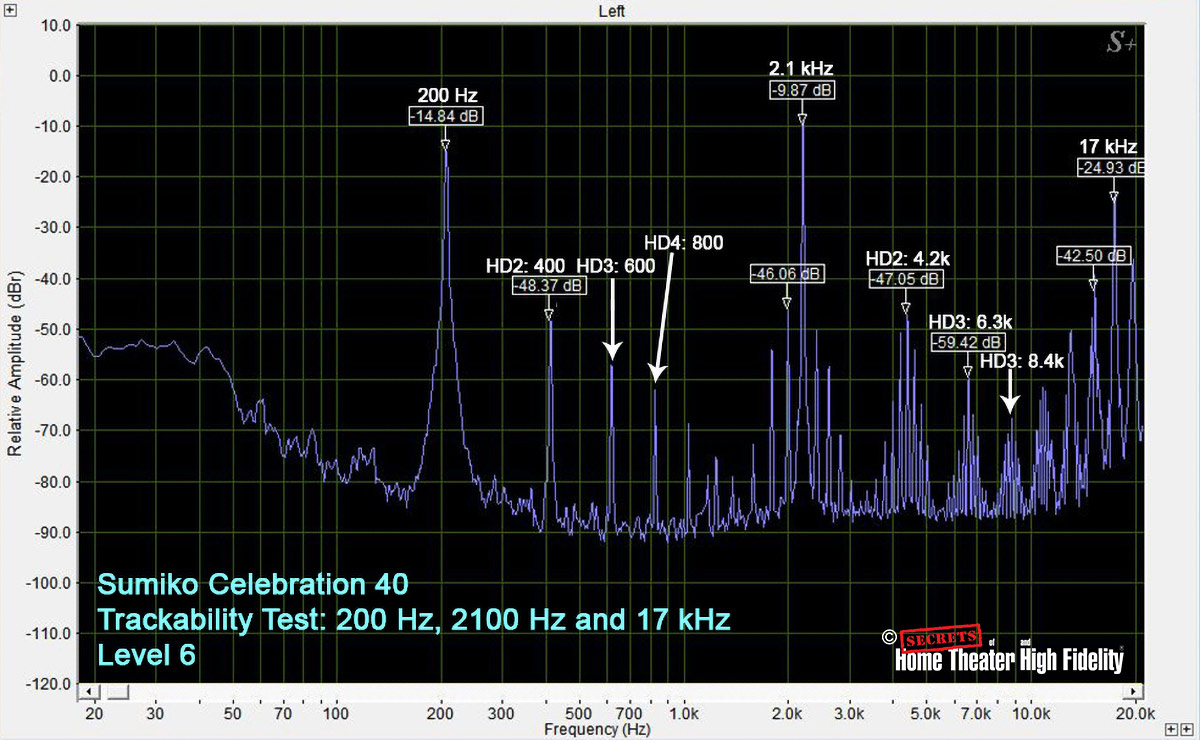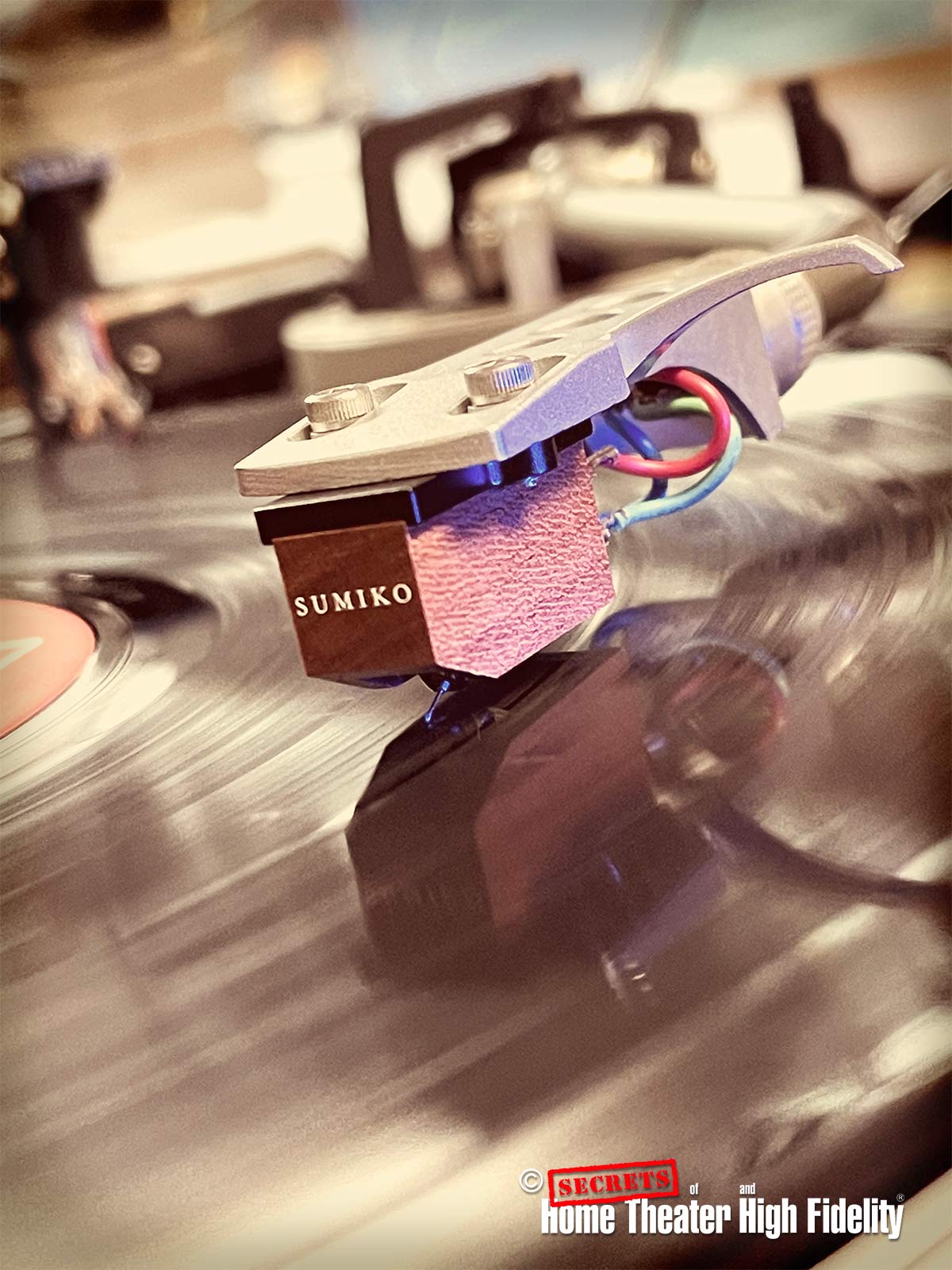Sumiko Celebration 40 Phono Cartridge
- A lively sounding cartridge with both solid bass reproduction and plenty of air in the treble
- A heavily euphonic presentation. It worked wonders, especially for the midrange and vocals
- Because of its voicing, care needs to be taken when system matching
- It’s kind of like an Instagram filter for your records; It’s designed to flatter the medium versus just telling you what’s there
- Beautifully put together
Bringing together a similar striking wooden body from the outgoing Sumiko Pearwood Celebration II and the same lightweight Microridge stylus from the Palo Santos Presentation cartridge, the new Sumiko Celebration 40 looks to sonically stand out from the crowd while also commemorating an important anniversary.
As the name implies, the Sumiko Celebration 40 has been made to commemorate the company’s 40th anniversary in phono cartridge making. For the Celebration 40, Sumiko has taken some of the best and unique bits from two of their most well-loved offerings (namely the retired Pearwood Celebration II and the Palo Santos Presentation cartridges), added a twist or two, and come up with a noteworthy and desirable result.
When I read through the company’s marketing materials for the Celebration 40, which references descriptors such as “rich, smooth, and warm, lacking in analytical tendencies” and “charm evoked by the likes of vintage tube audio” I clearly got the feeling that this was not going to be a cartridge for the “flat measurement crowd.” And honestly that includes me, guilty as charged. I appreciate a good accurate cartridge that, tracks well and doesn’t overly embellish on what is in the grooves. After all, we all need a reference point and I own a couple of good moving magnet and moving coil cartridges that do just that. But vinyl is one of those music mediums that, because of its inherent imperfections, I am finding more of an openness to experience and experiment with embellishment. For me, if I want (relative) accuracy and perfection in my music, I’ll stick with digital, be it streaming or disc. If I’m going to go through the additional effort, ritual, and frankly trouble to play vinyl, then I’m looking more for the experience. And the Sumiko Celebration 40 is very much about the experience.
Design:
Moving Coil Phono Cartridge with Plumwood body
Stylus Tip:
75μm x 2.5μm Microridge Diamond tip mounted on a ⌀0.28mm Boron cantilever
Internal Impedance:
35Ω
Stereo Output:
0.5 mV @ 1 kHz
Frequency Response (Manufacturer):
10 Hz – 50 kHz
Channel Separation (Manufacturer):
30 dB @ 1kHz
Recommended Tracking Force:
1.9 – 2.2 grams (2.0 grams standard)
Recommended Resistance Loading:
100 – 1kΩ
Recommended Capacitance Loading:
100-200 picofarads/channel (includes tonearm wiring and phono preamp input capacitance)
Cartridge Height:
16.5 mm
Weight:
7.0 grams
Accessories:
Installation screws and washers, screwdriver, cleaning brush, and lead wire set
MSRP:
$2,799.00
Website:
Company:
SECRETS Tags:
Sumiko, celebration, 40, anniversary, phono, cartridge, audiophile, moving coil, plumwood, microridge
As mentioned earlier, the Sumiko Celebration 40 is considered a replacement for the retired Pearwood Celebration II model. Visually, it adopts a similar real wood body but of a different species. Plumwood is used instead of Pearwood for the Celebration 40 and both the grain and coloration give the cartridge a bit of a Mission or Craftsman furniture vibe right off the bat. Putting 20th Century stylistic thoughts of Frank Lloyd Wright and Greene & Greene off to the side for a moment, the mechanicals of the Celebration 40 are thoroughly advanced and up to date.
The cartridge uses the same 75μm x 2.5μm Microridge diamond tip mounted on a 0.28mm boron cantilever as found in the Sumiko Palo Santos Presentation cartridge. The moving coil guts of the Celebration 40 puts out a healthy 0.5mV, plenty to work with for any capable MC phono preamp. Mounting the cartridge is made relatively easy with straightforward mounting points and clear sightlines to allow for accurate alignment. The Sumiko Celebration 40 comes with mounting hardware, a miniature screwdriver, extra leads, and a cleaning brush. The stylus is not user-serviceable and requires the attention of a qualified Sumiko technician for repair or replacement.
For this review, the connected components consisted of a Technics SL1200 Mk 6 turntable with a KAB fluid dampened tonearm mod and a custom power supply, a PASS Labs XP-25 phono preamp, a Rotel RQ-970BX phono preamp, and a Bryston BP2-20 MM/MC phono preamp. The rest of my audio chain consisted of the Benchmark Media HPA4 preamplifier, AHB2 power amplifier, Revel F228Be loudspeakers, and Paradigm Founders 120H speakers. Speaker wire and interconnect cable are from Clarus Cable and Blue Jeans Cable.
The Sumiko Celebration 40 was installed in an OEM Technics SL1200 headshell and was mounted using the Technics Overhang Gauge and aligned using a Shure alignment guide. The tracking force was set using a digital tracking force scale and anti-skate was set with the aid of the anti-skate band track of the Shure “Audio Obstacle Course” LP (TTR-117). The tracking force was set to the optimum level as recommended by the manufacturer, in this case, 2.0 grams.
Immediate first impressions upon opening the shipping box and examining the contents are that the Celebration 40 arrives nicely and securely packaged in a beautiful little wood presentation box. From a build quality standpoint, the construction and finish of the cartridge are of a very high standard.
Sonically, the first thing I noticed with the Sumiko Celebration 40 was that everything sounded very euphonic, much more so than when listening with my standard reference Audio-Technica OC9ML/II or any of the other AT (VM540ML, VM760SLC) or Ortofon cartridges (2M Red and 2M Black) that I had on hand. The OC9ML/II is a very well-balanced cartridge overall and that’s why it is my typical go-to for LPs. Good tracking ability, great detail retrieval, it presents a very solid soundstage and has excellent body to its sound.
The Celebration 40 by comparison is like pushing on the old “Loudness” button on that first really good stereo receiver that I scrimped and saved for in college. Cue up a track and it’s like “POW!” Everything sounds bigger, richer, and lusher. Detail and bass sound juiced, but not to the point of being tiring or gimmicky. Because, unlike the old Loudness button that was only meant to be used when listening at lower volumes (it could cause distortion if you jacked up the volume too much), the sound of the Celebration 40 was addictive. I wanted to turn it up louder and just be surrounded by that big sound! I’m going to stay away from that overly lyrical terminology typically reserved for things like wine and cigar reviews, tempting as it might be to use it here. In my estimation, the Sumiko Celebration 40 gives you the kind of big, warm lush sound that lots of people seek and inevitably spend a good deal of time and money to try and recreate in their stereo systems through careful component matching.
I tried a few different combinations of gear and speakers with this cartridge and, in my case, I got the best results by pairing the Celebration 40 with the Bryston BP2-20 MM/MC phono preamp, my Benchmark media stack, and the Paradigm Founder 120H loudspeakers (the Revel F228Be were also very good). The synergy when listening to vinyl was nigh on perfect for me. I got that tube-like extra warmth and bloom while still having my revealing electronics, paired to speakers without an overly flat or aggressive top end. I didn’t encounter any noticeable tracking issues with any of the music I listened to using the Sumiko Celebration 40 although, as you’ll see in the Bench Test section, the cartridge wasn’t the most stellar tracker that we’ve had with our Tracking Test grooves.
There is no doubt in my mind that this cartridge is voiced in what Sumiko surely hopes is the most pleasing and beguiling manner possible. I mean you don’t put a fine wooden body on a phono cartridge and expect it not to have some sort of sonic coloration. And for that very reason, I’d advise anyone considering this cartridge to take an extra measure of care in the system matching to it. The Sumiko Celebration 40 has a ton of personality already dialed in and, if you’re not careful, you can very easily find yourself with too much of a good thing.
Some of the more memorable music selections that I experienced with the Sumiko Celebration 40 Phono Cartridge:
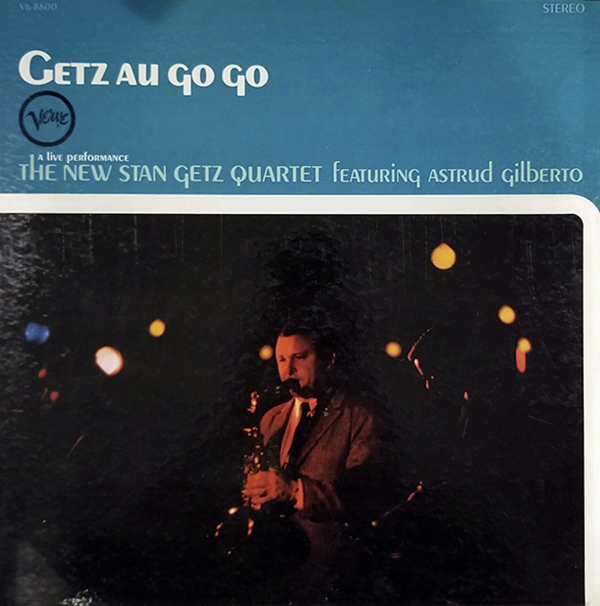
The New Stan Getz Quartet “Getz au Go Go, Verve LP, V6-8600, 1962”
One of my favorite jazz albums ever. This live performance features Astrud Gilberto on vocals and the combination of her distinctive voice and Getz’s saxophone is just perfection. Kenny Burrell on guitar and Gene Cherico on bass add so much extra to this group. It doesn’t get any smoother sounding than this and the Sumiko Celebration 40 brought out all the richness of Gilberto’s singing while punching up all the venue ambiance of the Cafe Au Go Go nightclub. The cartridge made this live performance sound even bigger than it normally does. And then Getz’s saxophone playing pierces through sounding utterly vibrant and engaging. “Corcovado” is a Bossa Nova classic that has been covered more times than I can count, but this album’s performance of it will always be the definitive version for me. Astrud Gilberto’s voice is so fluid and liquid coming through the Celebration 40, it’s utterly beguiling. “The Telephone Song” is another great track that provides more of the same albeit more up-tempo. There are a few points in this song that the drummer (Helcio Milito) is keeping time and adding flourishes on the cymbal, and it comes across with such fantastic sparkle and with a clear metallic sheen that I don’t often get when listening to vinyl.
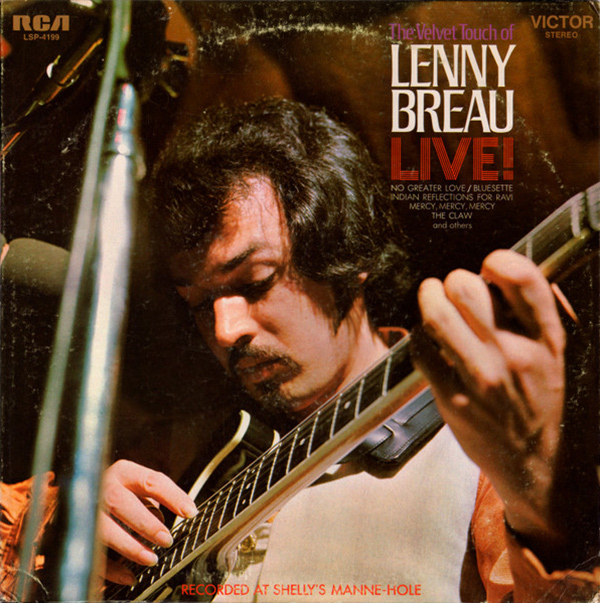
Lenny Breau “The Velvet Touch of Lenny Breau-Live, RCA LP, LSP-4199, 1969”
This LP is a live recording done at Shelly’s Manne-Hole, a popular live venue at the time in Hollywood, and the sound is simply wonderful – lush and full providing a good sense of the performance space. There is an eclectic mix of styles that Breau plays throughout this album, from Country to Bluegrass to Jazz to Flamenco to East Indian to straight Blues. Just hearing the first song called “The Tuning Tune” (he is actually tuning up but it’s as much performance as necessity) with the incredible sounding guitar harmonics interacting with the recording venue space lets you know that you are in for a treat. The term lush would be an understatement when trying to describe the sound with the Sumiko Celebration 40 here! The track “Spanjazz” has Breau performing some beautiful and complex Spanish-style solo work on acoustic guitar. The Celebration 40 makes the energy of the instrument sound so warm and intimate but without obscuring any of the delicate details of his playing. It’s easy to hear Breau playing both rhythm and lead simultaneously on this track with some of the rhythm notes having a nice, gutsy low-end punch combined with the lovely harmonic ring of those higher lead strings. A lovely immersive listen.
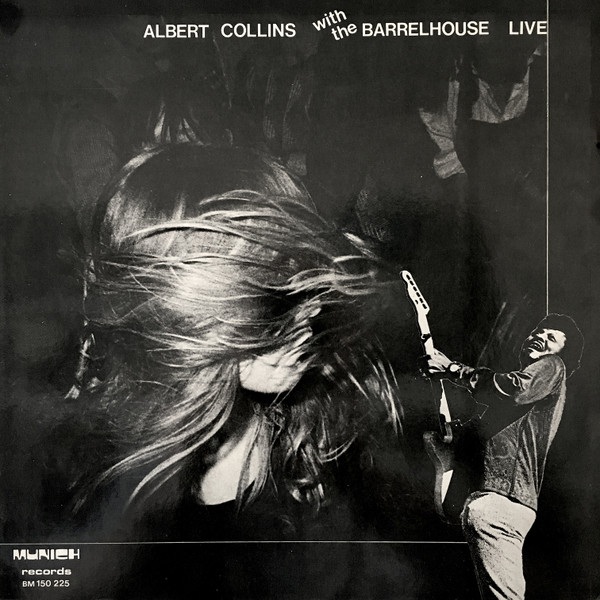
Albert Collins “Albert Collins with The Barrelhouse, Live, Munich Records LP, VV NL 398 61, 2021”
I saw the late Albert Collins in concert around 1989 in Toronto, while I was still attending college. He played in an old Masonic temple that had been converted into a concert venue. It was standing room only, and it was one of the most electrifying, up-close, and personal shows that I had ever seen. While this performance was recorded in Holland about 11 years before the concert I attended, listening to this album through the Sumiko Celebration 40 vividly brought all those great memories back. This is a very well-recorded live blues set. The small venue acoustics are captured well and the local supporting band, The Barrelhouse, was tight and obviously on fire that night. To top it off their female singer, Tineke Schoemaker, had soulful vocal chops and she put that voice to good use on “Blue River Rising” and “Cock it on the Wall.” The Sumiko Celebration 40 gives Schoemaker’s voice an extra dose of smoothness and richness that makes it sound so appealing. And Albert Collins sounds as good and on point, as I have ever heard on a recording, just check out “Keep Your Business Straight” for a prime example. Collins’ trademark “icy” Telecaster guitar tone just cuts through everything and is front and center in some fantastic extended soloing. The band and the room are spread out in a big sonic canvas, and it makes for a great listen.

Antonio Vivaldi “The Four Seasons-Vivaldi Ensemble Tokyo”
This is one of several recordings of Vivaldi’s The Four Seasons that I own. What makes this one special is that it was made from a Direct-to-Disc recording process and that it plays at 45rpm. As such, for its age, it’s a wonderfully clean sounding and dimensional LP of this music. Again, the Sumiko Celebration 40 worked its magic, making this performance sound bigger and warmer than I am used to and yet still retaining all the detail and potency that I expect from this LP. The sense of space of the recording hall was well relayed in my listening. Little details like the turning of pages and resting of bows were easy to hear as were many of those little nuances you get when pulling a bow across a set of strings. The “Summer” suite is my favorite of the seasons, and the power expressed in the final portion of it was so enjoyable to hear. I could easily place the different parts of the string section in space before me and the little extra bass punch provided by the Sumiko gave the cellos and bass a nice little bit of additional “oomph” here.
Benchmarks were obtained by using a Technics SL1200 Mk 6 turntable, which has been modified and rewired by KAB Electroacoustics, as a testbed. The Denon Audio Technical Test Record (XG-7005) was used for frequency response, channel separation, and distortion measurements. The CBS Technical Labs (STR 112) test LP was used for high-level THD and two-tone intermodulation distortion tests. Three-tone intermodulation distortion tests were performed using the Shure TTR 117 LP.
The output, from the phono stage, was recorded digitally at 24-bit 48 kHz (to minimize groove wear on the test LPs) on a TASCAM HD-P2 digital recorder. Those results were analyzed on my computer using SpectraPLUS audio measurement software via the Lynx TWO B professional sound card. The Rotel RQ-970BX phono preamp was used for all these tests as it has a flat frequency response and a high immunity from being overloaded with test signals from some of the more aggressive LP grooves.
The top two traces on this graph indicate the Left and Right channel frequency response of the cartridge under test. The bottom two traces indicate what is heard in the opposite channel of the top traces while they are being individually swept. The difference in level between the top white trace (Left channel) and bottom red trace (Right channel crosstalk) is the channel separation between L and R. The difference between the top red trace (Right channel) and the bottom blue trace (Left channel crosstalk) is the channel separation between R and L. We report whichever figure is the worst-case at a particular frequency.
The frequency response of the Sumiko Celebration 40 shows that the Left and Right channels track tightly together with a +2 dB level at 20 Hz followed by a fairly flat response through much of the bass, midrange, and lower treble area. There is a minor 1.5dB trough from 50 Hz – 400 Hz. From 10 kHz – 20 kHz, there is a steady rise in the treble response peaking at +7 dB at 20 kHz. This sort of tipped-up response is not unusual to see as it appears in some other comparable audiophile cartridges.
Channel separation looks to be 28 dB (worst case) at 1 kHz, 26 dB (worst case) at 5 kHz, 25 dB (worst case) at 10 kHz, and 15 dB (worst case) at 20 kHz.
As can be seen, the worst-case distortion is slightly above 0.78% at 1kHz in the right channel.
The right channel also produced the worst-case distortion at 1.52% at 5kHz.
Distortion at 10kHz worst-case value is THD 3.5%. This is 2 times the value of other cartridges we have measured with a Microridge stylus.
Below are the worst-case distortion results of the 100 Hz Lateral and Vertical Tracking tests. Note that there are two sets of five test grooves. One set of grooves tracks in the stylus in the horizontal (lateral) plane while the other set tracks in the vertical plane. The grooves get progressively larger (more difficult to track) as the um figure increases. The test records used for the Lateral and Vertical tests were the CBS Technical Labs STR-100 and STR-112. The grooves’ lateral widths and vertical heights are expressed in µm (micro-meters). In the lateral width test, the 100 Hz or 300 Hz sine wave movement was side-to-side in the groove, and in the vertical height test, the 100 Hz or 300 Hz movement was up and down. Distortion is specified as THD, not THD+N.
Below are the worst-case distortion results of the 300 Hz Lateral and Vertical Tracking tests. Note that there is one set of five test grooves for the Lateral test and one set of three test grooves for the Vertical test. One set of grooves tracks in the stylus in the horizontal plane while the other set tracks in the vertical plane. The grooves get progressively larger (more difficult to track) as the um figure increases.
Here is a 300 Hz Lateral spectrum for a groove 62um long. Distortion clocks in at 0.6%. Note the significant number of harmonics all the way out to 5 kHz. While the distortion figure itself is not bad we are beginning to see the cartridge showing signs of difficulty tracking with this groove.
In the 300 Hz Lateral test, with the 88um groove, the cartridge is now in distress and cannot track the groove properly.
In the vertical plane at 300 Hz, the cartridge starts becoming noticeably unhappy with the 44um groove showing a distortion level of 3.1%.
The THD is 0.88% and the IM reference to the 400 Hz tone, which is the largest amplitude of the two tones, is 1.3%. 4kHz THD is 0.9%.
Here we see the right channel THD differs from the left and is up to 2.1%. The IM reference to the 400 Hz tone, which is the largest amplitude of the two tones is 2.1%.
You can see the IM spurs extend to 20 kHz.
The 88um groove spectra is not shown since the cartridge could not track that test groove.
We move now to the Shure TTR117 trackability test LP.
The LP has 6 levels. They go up 7 dB from the lowest (Level 1) to the hottest (Level 6) test. We tested with Level 1 and Level 6 grooves.
For Level 6, the groove velocity of the 200Hz tone is at 2.2cm/sec, the 2.1 kHz tone at 11cm / sec and the 17 kHz tone at 10cm /sec.
This last spectra is perhaps the most challenging. Shure tried to create one groove to encapsulate a cartridge’s tracking performance which is valuable, but all our tests show a different aspect of a cartridge’s abilities which helps create a more complete technical picture.
THD for the 200 Hz tone is 1.3%. The 2.1 kHz THD is at 1.4%.
IM between 200 Hz and 2.1 kHz is 2% for the Celebration 40. The value is referenced to the larger 2.1 kHz tone. This is more than twice the best-performing cartridges with a Microridge stylus.
The IM spurs around 17 kHz are referenced to the larger 2.1 kHz tone. The result is 6%. Now we are 3X the best performing cartridges with a Microridge stylus.
The Sumiko Celebration 40 is a music lover’s cartridge. With careful setup and equipment pairing, it should reward you with a beautiful, rich, and engaging experience. And isn’t that what vinyl aficionados are ultimately after?
- Beautiful looking cartridge
- Warm, euphonic, appealing sound with plenty of detail and solid bass
- Great build quality
- Slightly better measured tracking ability for a Microridge stylus
The Sumiko Celebration 40 is a beautiful looking, and sounding, phono cartridge that is designed for a vinyl enthusiast looking for some very specific qualities. And to Sumiko’s credit, they make no bones about it. If you are the kind of person looking for the most accurate and linear presentation of what is in those grooves (just the facts Jack) then this cartridge may not be for you. The Celebration 40 is designed and voiced in such a way as to flatter the music, to embellish it with some additional character but without going so far as to gloss over musical details or detract from the experience. I suspect a good part of that is due to the Microridge stylus. Then that Plumwood body and some finessing of the electrical characteristics are what gives the cartridge its character. I’ve heard several voiced cartridges that, in one way or another, are far less successful than the Sumiko Celebration 40. Now I like the sound of a good, accurate, linear cartridge, and all things being equal, that is what I normally gravitate to. But whereas my AT OC9ML/II is enjoyable to listen to, the Sumiko Celebration 40 is a more seductive and addictive listen. And in many ways, for the asking price, it should be. I re-iterate though, with any cartridge that is voiced to this degree, careful consideration to the other components in your system is recommended. I happened across a combination of components that I felt gave me the full experience of what this cartridge was musically capable of. It may not be the last word in measured accuracy, but the Sumiko Celebration 40, in the right setup, was one of the most musically engaging audio baubles I’ve had in my system. It helped give me the full “vinyl” experience, the kind that the most committed, glassy-eyed analog junkies constantly bang on about. It was honestly tough to let it go.
The author would like to thank David A. Rich for his invaluable assistance with this review.


